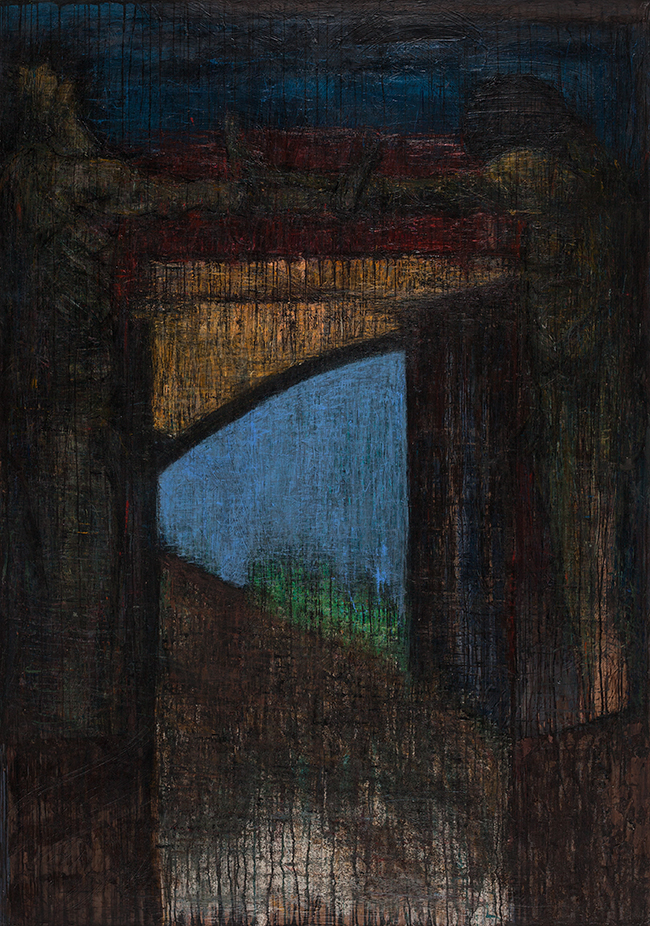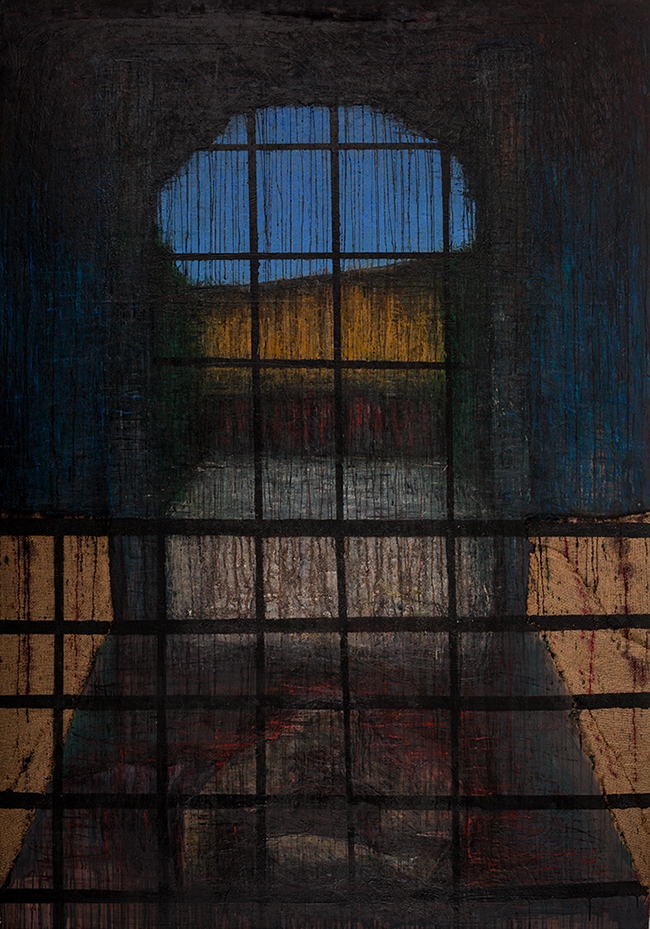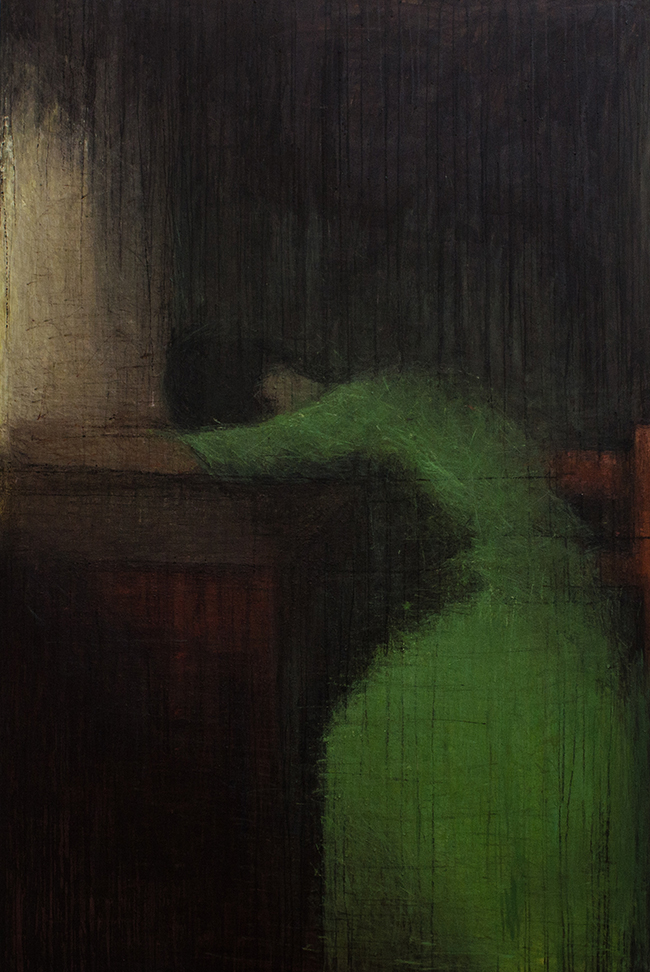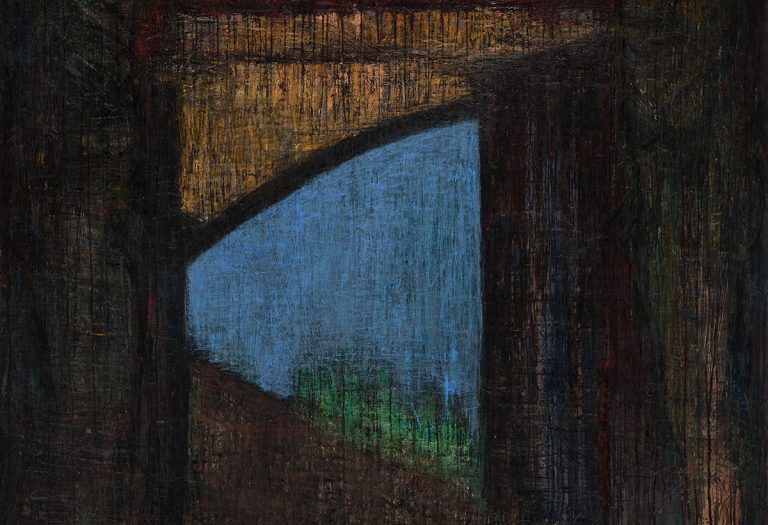Katerina Tsitsela is an artist whose work spans both painting and engraving, offering a unique exploration of human perception and emotion. Her artistic research delves into the psychoanalytic interpretation of landscapes, which she terms “internal landscapes” or “landscapes of the human soul.” Tsitsela’s paintings express dark, introspective mental states, where beams of light push through the darkness, illuminating figures that represent existential struggles. Her work invites viewers to engage with these figures through their own emotional lenses, reflecting the human condition. Tsitsela focuses on uncovering an excessive truth, one that lies beyond material reality. The interplay of earthy colors, bold strokes, and the tactile quality of cement on the canvas reflects the emotional turmoil in both the figures and landscapes she depicts. Recently, she has become increasingly interested in using natural materials on a large scale, emphasizing gesture and movement in her process, leaving behind works that feel like relics of her physical and emotional exertion.
The Struggle of Light and Dark
Katerina Tsitsela’s paintings are marked by their stark contrast between light and darkness, a deliberate choice that underscores the internal battle within the human psyche. Her work is moody and evocative, presenting landscapes that aren’t just physical terrains but deeply personal, psychological spaces. In these spaces, light represents hope, understanding, or moments of clarity, while the pervasive darkness signifies the chaotic and uncertain aspects of the mind. This tension between light and dark forms the backbone of her artistic narrative, allowing viewers to interpret the struggle for emotional balance and self-awareness in their own ways.
One of the most striking aspects of Tsitsela’s work is her use of shadowy figures, which are often half-revealed, half-concealed. These figures are not passive elements of the paintings; instead, they actively engage in the drama of existence that her work portrays. They symbolize the hidden facets of our emotions—thoughts and feelings we often keep buried or are unaware of. These figures, shrouded in mystery, represent our daily battles with these internal forces, constantly challenging us to look deeper into ourselves.

The Roughness of Expression
What sets Tsitsela’s work apart is not just the psychological depth but the physicality of her process. Her choice of materials—canvas, cement, and natural pigments—creates a raw, almost tactile texture that brings her landscapes to life. The boldness of her brushstrokes and the rough, imposing quality of the surfaces she works on mirror the emotional intensity she seeks to convey. There is no softness in her landscapes; everything feels jagged and unfinished, much like the internal conflicts her work represents.
The rough, earthen tones that dominate her canvases are a direct reflection of the natural world, but they also carry with them the weight of human emotion. The muted browns, greens, and blacks create a grounded, heavy atmosphere, while sudden bursts of brighter colors—often yellows or whites—seem to tear through the canvas like fleeting moments of clarity in an otherwise chaotic world. These colors, along with the textured surfaces, give viewers a visceral sense of being immersed in the landscape itself, feeling the weight of the turmoil depicted within it.

Engaging the Viewer
Katerina Tsitsela’s paintings are not designed to offer comfort or easy answers. Instead, they challenge the viewer to confront the complexity of their own inner landscapes. The figures in her paintings do not provide solutions; they embody the questions and struggles we all face as we navigate the uncertainties of existence. Her work asks viewers to engage deeply, to reflect on their own perceptions and emotions. The dynamic interplay of light and darkness, the physicality of the materials, and the psychological depth all work together to create a space for introspection.

The Journey Through Material
In her recent work, Katerina Tsitsela has taken her exploration of natural materials to a larger scale. This interest in the process of creation—how the materials themselves influence the final artwork—adds another layer of meaning to her paintings. Tsitsela views the act of painting as an executive gesture, a physical manifestation of her inner world. The materials, whether cement or canvas, bear witness to the emotional and physical journey she undertakes with each piece.
For Tsitsela, the final artwork is more than just a representation of an idea; it is a relic of the creative process itself. The movement, the gesture, the exertion—all are embedded in the work, giving it a sense of history and presence. This focus on the act of creation as an integral part of the artwork itself aligns with her broader themes of exploring the inner self and the constant push-and-pull between clarity and chaos.
In sum, Katerina Tsitsela’s work is a profound exploration of the human experience. Through her use of light, shadow, and material, she captures the ongoing struggle for emotional balance and self-understanding, inviting viewers to reflect on their own internal landscapes.

